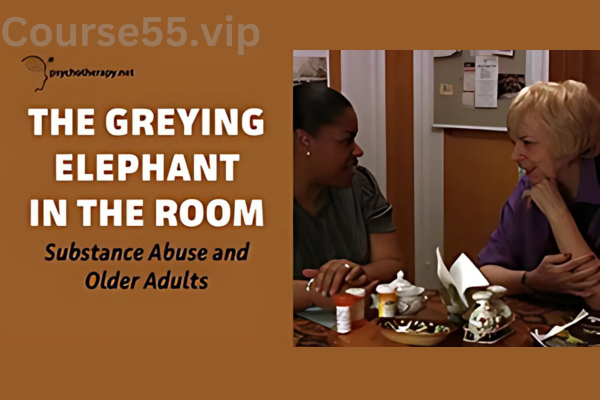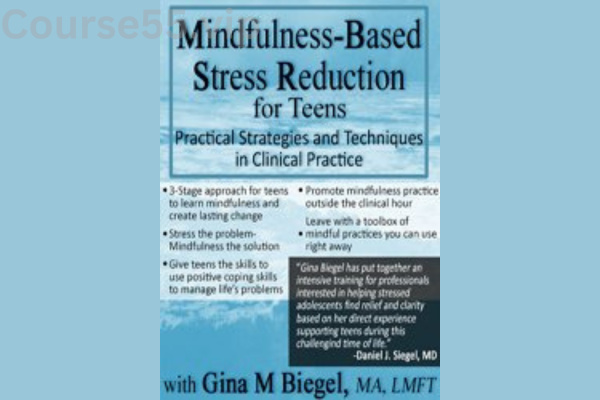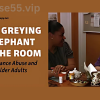-
×
 SEO Operating System By James Ewen
1 × $15.00
SEO Operating System By James Ewen
1 × $15.00 -
×
 PTSD in Veterans: Impact of PTSD on Military Personnel and War Veterans and Their Families By Michael Gatson - PESI
1 × $23.10
PTSD in Veterans: Impact of PTSD on Military Personnel and War Veterans and Their Families By Michael Gatson - PESI
1 × $23.10 -
×
 The Marriage Reset: From Obligation To Adventure By Dani Johnson
1 × $31.00
The Marriage Reset: From Obligation To Adventure By Dani Johnson
1 × $31.00 -
×
 Intermediate To Advanced Breath-Control Course By Simon Borg-Olivier
1 × $39.00
Intermediate To Advanced Breath-Control Course By Simon Borg-Olivier
1 × $39.00 -
×
 Acceptance and Commitment Therapy (ACT) Made Easy: Innovative Techniques for Depression, Anxiety, Trauma & Personality Disorders By Douglas Fogel - PESI
1 × $23.10
Acceptance and Commitment Therapy (ACT) Made Easy: Innovative Techniques for Depression, Anxiety, Trauma & Personality Disorders By Douglas Fogel - PESI
1 × $23.10 -
×
 Fast Track 6 Figure Formula By Ray Higdon & Mark Hoverson
1 × $23.10
Fast Track 6 Figure Formula By Ray Higdon & Mark Hoverson
1 × $23.10 -
×
 Ethics & Cultural Competency: 1-Day Intensive Certificate By Frances Patterson - PESI
1 × $23.10
Ethics & Cultural Competency: 1-Day Intensive Certificate By Frances Patterson - PESI
1 × $23.10 -
×
 Understanding the Needs of the Dying: Bringing Hope, Comfort and Love to Life's Final Chapter By David Kessler - PESI
1 × $23.10
Understanding the Needs of the Dying: Bringing Hope, Comfort and Love to Life's Final Chapter By David Kessler - PESI
1 × $23.10 -
×
 What to Do in the First 90 Days of Your New Job
1 × $23.10
What to Do in the First 90 Days of Your New Job
1 × $23.10 -
×
 Trauma-Informed Yoga for Children and Adolescents: Mind-Body Sequencing for ADHD, Anxiety and Post-Traumatic Stress By Kathy Flaminio
1 × $23.10
Trauma-Informed Yoga for Children and Adolescents: Mind-Body Sequencing for ADHD, Anxiety and Post-Traumatic Stress By Kathy Flaminio
1 × $23.10 -
×
 Advances in Motor Control and Learning for Neurological Rehab By Ben Sidaway - PESI
1 × $23.10
Advances in Motor Control and Learning for Neurological Rehab By Ben Sidaway - PESI
1 × $23.10
The Greying Elephant in the Room Substance Abuse and Older Adults with Carol Tosone
$39.00 Original price was: $39.00.$7.70Current price is: $7.70.
SKU: C55vip.46383MKrcDmvj
Category: Download
Tags: Carol Tosone, Older Adults, Substance Abuse, The Greying Elephant in the Room
The greying elephant in the room: Substance abuse and older adults – Digital Download!

The Greying Elephant in the Room Substance Abuse and Older Adults with Carol Tosone
Overview

The Unseen Crisis: Substance Misuse Among the Elderly
Substance misuse in older adults is often described as a grey elephant—visible yet neglected. With baby boomers aging into a demographic increasingly affected by substance dependence, urgent concerns emerge about how prepared health and social service systems are to support this group. In the video “The greying elephant in the room: Substance abuse and older adults,” Carol Tosone highlights this growing issue, offering an in-depth look at the hurdles older individuals face with substance use. Her commentary underscores the critical role social workers must play in evaluating and aiding this vulnerable group. This article delves into the video’s core themes, reviews the social work methods addressed, and examines the future implications for working with elderly clients experiencing addiction.
Gaining Insight Into Elder Substance Misuse
Addiction in later life is not simply a personal problem—it’s influenced by widespread societal dynamics. Older adults confront a distinct set of life events that can heighten their risk for substance misuse. Bereavement, loneliness, and worsening health often intersect, creating a landscape in which alcohol or drug misuse can flourish. Research shows that many seniors are turning to substances to manage aging’s emotional and physical toll, yet they encounter substantial difficulties in finding suitable treatment.
Obstacles That Older Adults Commonly Encounter
• Stigma: Substance issues in seniors are often met with judgment, with many viewing addiction as a moral shortcoming. This perception can prevent individuals from seeking the support they need.
• Diagnostic Confusion: Mental health symptoms like anxiety or depression are frequently dismissed as normal aging processes, leading to underdiagnosis or incorrect treatment.
• Health Complications: Managing chronic diseases while using substances adds complexity, as interactions between medications and substances can worsen existing problems.
• Social Disconnection: Aging is often accompanied by reduced social interaction, increasing the risk of substance use as a means of coping with solitude or emotional distress.
Social Workers as a Bridge to Support
Social workers are essential in linking older adults to care and support networks. Tosone stresses the importance of understanding the particular dynamics of addiction in this age group in order to provide meaningful help. Social workers can improve their impact by practicing:
• Cultural Awareness: Recognizing how background and ethnicity can affect treatment outcomes.
• Compassionate Dialogue: Building rapport through trustful, respectful communication that encourages seniors to share openly about their struggles.
Case Spotlight: Carol’s Story of Alcohol Dependence
In the video, viewers follow Denise, a social work intern, as she works with Carol, a 68-year-old battling alcoholism and depression. Denise’s experience offers a real-world example of effective engagement, presenting valuable takeaways for working with older individuals.
Therapeutic Relationship Dynamics
The bond between Denise and Carol serves as a model for cultivating strong therapeutic connections. Their interactions reveal critical elements in helping older clients:
• Processing Loss: Carol’s grief over the loss of loved ones heavily influences her drinking. By acknowledging her sorrow, Denise opens space for deeper conversations about alcohol use.
• Resistance to Help: Carol’s reluctance to accept treatment highlights the need for persistent yet empathetic approaches.
• Managing Countertransference: Denise’s emotional reactions to Carol’s pain present challenges, emphasizing the importance of self-awareness for maintaining professional boundaries.
Strategies for Evaluating and Diagnosing Seniors
Tosone shares effective assessment techniques that consider the nuances of aging:
• Thorough Screening Tools: Using assessment instruments designed specifically for older individuals to uncover substance use issues.
• Whole-Person Evaluation: Looking at personal history, mental and physical health, and support systems to gain a full understanding.
• Listening Deeply: Encouraging meaningful conversation by allowing older adults to share openly fosters trust and better engagement.
Cultural Influences and Their Impact on Recovery
Tosone’s research points to the powerful influence of cultural identity on how older adults experience treatment. Studies consistently reveal differing levels of engagement and recovery success among racial and ethnic groups.
Delivering Care With Cultural Sensitivity
Culturally attuned treatment involves more than just awareness; it demands adaptation of services to respect the beliefs and experiences of diverse clients. Considerations include:
• Cultural Views on Addiction: Cultural background shapes how substance use is understood, which can influence openness to treatment.
• Language Challenges: Communication gaps can hinder care, making language accessibility crucial.
• Culturally Tailored Solutions: Programs aligned with clients’ values often see higher participation and completion rates.
Current Findings in Research
Studies support the idea that culturally specific approaches lead to better engagement. Older individuals from minority backgrounds who receive culturally informed services are more likely to remain in treatment and achieve favorable outcomes. This highlights the need for evidence-based methods in everyday practice for social workers.
Final Reflections
“The greying elephant in the room” invites society to face the often-ignored problem of elder substance use head-on. Carol Tosone’s insights urge social workers to develop a nuanced understanding of the particular struggles of this group. Through education, empathy, and culturally sensitive strategies, professionals can work toward more successful recovery paths for aging adults. With deliberate focus and informed action, this once-invisible issue can become a primary concern met with effective and compassionate care.
Frequently Asked Questions:
Business Model Innovation: We operate a group buying strategy, allowing participants to share costs and access popular courses at reduced prices. This model benefits individuals with limited financial resources, despite concerns from content creators about distribution methods.
Legal Considerations: The legality of our operations involves complex issues. Although we don’t have explicit permission from course creators to resell their content, there are no specific resale restrictions stated at the time of purchase. This ambiguity creates an opportunity for us to provide affordable educational resources.
Quality Control: We ensure that all course materials purchased are identical to those offered directly by the creators. However, it’s important to understand that we are not official providers. As such, our offerings do not include:
– Live coaching calls or sessions with the course author.
– Access to exclusive author-controlled groups or portals.
– Membership in private forums.
– Direct email support from the author or their team.
We aim to reduce the cost barrier in education by offering these courses independently, without the premium services available through official channels. We appreciate your understanding of our unique approach.
Be the first to review “The Greying Elephant in the Room Substance Abuse and Older Adults with Carol Tosone” Cancel reply
You must be logged in to post a review.











Reviews
There are no reviews yet.